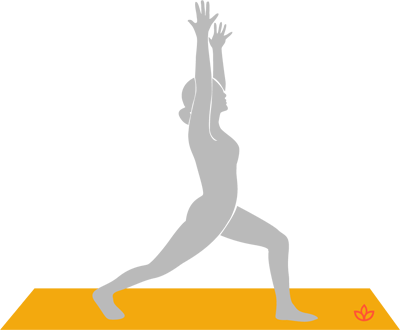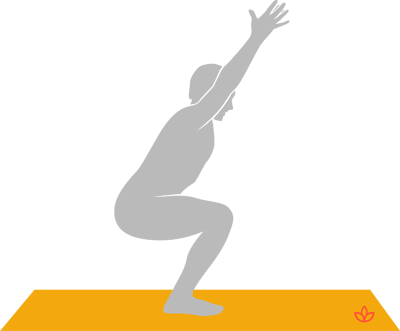Balance is a really important part of yoga. Not only do we need to have good balance while standing in balancing postures, we also need to have good balance in practically every yoga pose out there. Balance is all about strength and alignment — throughout all parts of the body. We need to have strong core muscles in order to have a healthy back. We need equal amounts of strength in our lower body as we do in our upper body. The yoga practice is all about balance, and the more we have, the more fluid and graceful our personal practice will be.
Here are some effective ways we can work to improve our balance through yoga:
Advice for Getting on Balance
Calm Your Fluctuating Thoughts
It might seem strange at first, but when you really consider it, your mental state has a profound affect on your ability or inability to balance. It’s really hard to keep your balance if your thoughts are running here, there and everywhere. But when your mind is relatively free from drama, your capacity for balancing in more challenging poses is much greater. Consider trying your best to focus your mind (drishti helps here) while you hold steady in balancing poses. (More on this in Using Your Drishti to Improve Focus.)
Practice Drishti
When you’re in a balancing pose, your drishti (yogic eye gaze) will help you balance in amazing ways. Be sure to focus the eyes on one point. Play around with your drishti. Notice how when your eyes are darting all over the place, it’s really hard to balance, but when they’re totally focused on one spot, balance comes way more naturally.
Drishti is one of the key components in all yoga poses, it just happens to be forgotten more often than not, unless you’re in a serious Ashtanga practice. But the drishti simply must be part of your posture when it comes to balancing poses.
Have a Strong Foundation
In standing balancing poses, it’s always a good draft to bring your attention to your foundation, which in this case, would be your feet. You want your feet to be totally grounded, like tree trunks rooted into the earth. That said, be sure all your toes are spread apart and broaden the base of the foot so that you feel as if you have a really strong and sturdy foundation. Feel your arches lift ever so slightly.
For balancing poses in which you’re balancing on your hands, your hands are your foundation. In this case, you want your fingers to be totally spread on the yoga mat. Make sure that your weight is evenly distributed. (This goes for all types of balancing poses.) Feel your palms lift up just a bit.
In seated poses, you’ll want an equally strong and balanced foundation, making sure your sit bones ground into the floor with the weight evenly distributed. You can improve your balance even in seated postures by making sure you tilt your pelvis just slightly forward while getting the flesh covering up your sit bones out of the way in order to balance equally on each bone. In staff pose, for example, it’s important that your toes are flexed, stretching toward you. You may even draw up through mula bandha to improve balance. There are all sorts of little tricks in yoga to cultivate a strong sense of ease and balance in various postures.
Close Your Eyes
Finally, in any pose, try closing your eyes. It’s amazing how challenging it is to do this in any posture. But closing your eyes does improve balance, and it’s kinda fun to try whenever you’re feeling daring!
Asanas to Practice
Practice makes perfect, and the more you practice certain asanas, the better your balance will be with time.
Tree Pose
Tree pose , also known as vrksasana in Sanskrit, is a beginner's balancing pose, and it’s great to practice daily to improve your ability to stand on one foot, building a stable foundation. (Learn more about this fundamental pose in Tree Pose and Its Many Benefits.)

Mountain Pose
Believe it or not, mountain pose, also known as tadasana, improves balance. Sure, you’re standing on two feet, but consider doing it with your eyes closed. Mountain pose is a perfect pose to practice, especially for beginning yogis who want to work on balance.

High Lunge
Consider just how holding a high lunge takes good balance. This is the perfect pose to work with for both strength and balance. Don’t forget your drishti!

Chair Pose
Chair pose, also known as utkatasana, is another great posture to practice when trying to improve balance. Engage your core and keep your knees in line with one another.

Dancer’s Pose
Dancer’s pose, also known as Natarajasana, is a more advanced pose. But there are ways to modify as you work your way toward mastering it. For instance, a yoga strap or belt could be used, and so can the arm of a chair to help with balance.

Balance Your Expectations
As you work on improving your balance, be sure to be patient with yourself and go slow. Balance is a challenging thing to cultivate, but once you do, it’s an incredible talent to have in your yogic toolbox. It will make every asana that much more graceful and fun! (Continue reading in Quit Tripping: 3 Steps to Keeping Your Balance on the Yoga Mat.)
During These Times of Stress and Uncertainty Your Doshas May Be Unbalanced.
To help you bring attention to your doshas and to identify what your predominant dosha is, we created the following quiz.
Try not to stress over every question, but simply answer based off your intuition. After all, you know yourself better than anyone else.